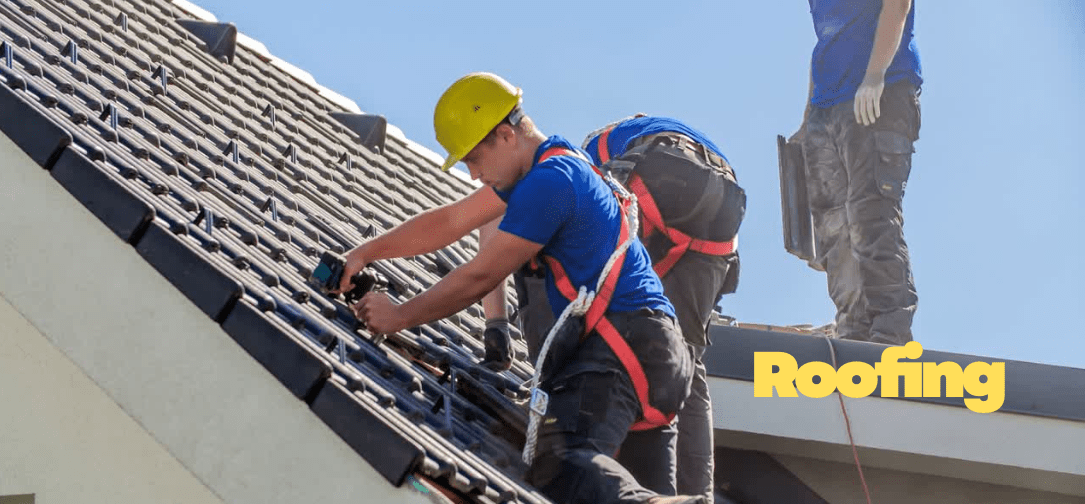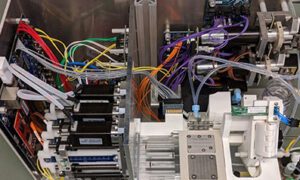Beneath the ever-bright Texas sun and the fast-rising skyline of Austin, a quiet transformation is unfolding above our heads. Professional roofing contractors are redefining the city’s architectural identity, melding craftsmanship, science, and sustainability to protect homes and power progress. From historic neighbourhoods to futuristic tech campuses, Austin’s rooftops tell a story of resilience and innovation. This feature delves into the people, technologies, and trends shaping that story, unveiling how today’s professional roofing contractor stands at the intersection of artistry, engineering, and environmental foresight in modern Texas.
The Context in Austin: Why Roofing Contractors Matter
Austin is among the fastest-growing metropolitan regions in the United States. According to the latest demographic profiles, the city enjoys a unique climate, long hot summers, moderate winters, which places special demands on roofing systems. Wikipedia As building volume and population rise, so too does the need for high-quality roofing installations, replacements and maintenance.
In this environment, a professional roofing contractor is not simply laying tiles or shingles; they are responsible for ensuring structural integrity, weather proofing against aggressive heat, rainfall, potential hail or wind events, delivering energy-efficient solutions, and complying with local building codes. Their role becomes even more critical in Austin’s suburban expansion, high-end residential developments, and commercial build-outs.
Current Industry Snapshot: Austin & Texas Roofing Sector
Regional Scale and Market Activity
While there are limited city-specific revenue figures for Austin alone, the broader Texas roofing market provides meaningful context. According to a Q1 2025 industry update covering Texas, including metro areas such as Austin, Dallas–Fort Worth and Houston, the roofing market remained active, with buyers increasingly selective for sustainable, well-documented service businesses. Additionally, one source estimates that in Austin there are approximately 4,500 roofing contractors servicing the region, out of a total of 8,629 roofing contractor businesses in Texas. This large number underscores the high level of competition in the locality.
At the national level, the United States roofing market is estimated at USD 24.79 billion in 2025 and projected to reach USD 33.44 billion by 2030, a compound annual growth rate (CAGR) of around 6.17 per cent. Given that the Southwest region (which includes Texas) is forecast to post one of the fastest growth rates in roofing demand, this bodes well for Austin-based professional roofing contractors.
Demand Drivers Specific to Austin
Several factors contribute to robust demand in the Austin area:
- Residential growth and replacement cycles: With the housing stock rapidly expanding and many homes subject to Texas climate stressors, the need for roof replacement and repair is high. In the U.S. overall, replacement projects account for more than four-fifths of annual installations.
- Commercial and industrial expansion: Austin’s broader economy, with technology, manufacturing and commercial real estate growth, creates opportunities for contractors on non-residential roofing work. For example, a state-of-the-industry article for Texas noted strong activity in commercial roofing tied to business expansion.
- Climate and material demand: Given the region’s hot summers and frequent exposure to intense weather events, materials and installation quality matter. Roofing trends in Austin highlight innovation around “cool roofs”, metal and composite shingles, solar integration and digital tools.
- Competitive contractor market: The high number of contractors (circa 4,500 in Austin) means that differentiation through professional standards, technology and sustainable solutions is more important than ever.
Key Drivers Shaping the Professional Roofing Contractor Role in Austin
Emphasis on Sustainability and Performance
Local trend-analyses highlight that in Austin the uptake of energy-efficient roofing systems, such as cool roofs that reduce heat gain, solar roofing options, and high-performance insulation, are gaining traction. For the professional roofing contractor, this means staying abreast of new materials, technologies and client expectations around sustainability.
Digitalisation, Technology and Smart Services
In Austin the roofing industry is being transformed by technology: drone inspections, roof-asset-management software, digital hand-over packs, and predictive maintenance tools. One local commentary lists “smart roofs catch damage before it shows” as a key trend. For professional contractors, deploying these tools can offer competitive advantage, increase transparency to clients and improve lifecycle outcomes.
Skills, Accreditation and Professional Standards
With a large number of contractors operating in and around Austin, clients are increasingly focused on quality, accreditation and reputation. Given the complexity of modern roofing systems, the professional contractor must ensure compliance with safety standards, local building codes and warranty provisions. As one local article mentions, licensing and accreditation remain significant in Texas.
Material Cost Pressure & Supply Chain Dynamics
Texas commercial roofing commentary reveals that input cost inflation and material availability are real concerns. For instance, one report cited a more than 23 per cent year-on-year increase in non-residential construction input costs and very large rises in raw materials. For a professional roofing contractor in Austin, managing cost escalation, sourcing alternative materials and communicating transparently with clients is increasingly important.
Challenges Facing Contractors in the Austin Market
Labour Shortages and Skill Gaps
As the Austin metro grows, the demand for skilled roofing operatives grows too. A national study indicated that 72 per cent of contractors considered recruitment of new labour their greatest workforce challenge. In a competitive market such as Austin, firms that invest in training, apprenticeships and workforce retention are more likely to succeed.
Competitive Intensity and Market Saturation
With an estimated 4,500 roofing contractors in Austin alone, the professional roofing contractor must differentiate. Success will hinge on service quality, branding, transparency, value-added services and professional credentials. The large number of local firms increases the risk of price erosion and lower-quality entrants which can impact reputation across the sector.
Rising Material and Operational Costs
As noted above, cost inflation in materials and energy feeds into roofing cost structures. Supply-chain constraints and the need to adopt newer material technologies (e.g., solar roofs, high-performance membranes) also raise complexity and investment levels for contractors.
Regulatory, Warranty and Liability Risks
Roofing is inherently high risk: working at height, exposure to the elements, complex roofing systems, warranties and long-term performance expectations. In Austin, where weather events, heat stress and hail can impact roofs, the professional roofing contractor must be vigilant in ensuring workmanship, insurance cover, warranty management and compliance with building codes.
Future Projections & Strategic Imperatives for Austin-Based Contractors
Continued Growth in Demand and Value-Added Services
Given national projections (6.17 per cent CAGR for U.S. roofing market to 2030) and Austin’s growth trajectory, the professional roofing contractor is positioned for continued demand. For example, the U.S. market is expected to reach USD 33.44 billion by 2030. In Austin, as older homes age and new builds proliferate, replacement work, maintenance contracts and high-tech installations (solar, smart roofs) will be key growth segments.
Premium Positioning via Technology and Sustainability
Contractors who adopt advanced materials (solar roofing, metal/composite shingles, cool roofing systems), digital asset management and maintenance-oriented services will command higher value. The local trend-analysis emphasises “metal and composite shingles”, “solar roofing adds power and property value”, and “digital tools speed and simplify care”. This suggests that professional contractors who specialise in these niches will differentiate effectively.
Lifecycle and Maintenance Contracts for Recurring Revenue
Rather than solely focusing on installation, the professional roofing contractor should consider full-lifecycle service models: inspections, maintenance, warranties, asset-management and predictive servicing. In a market such as Austin where homeowners and property-managers will increasingly value long-term performance and energy efficiency, this service model holds significant promise.
Strategic Workforce Development and Accreditation
To stand out in a crowded market, contractors will need to invest in accreditation (licensing, safety certification), workforce training, documented processes and client-facing transparency. Given Texas’ high number of contractors, professionalism and reputation will be differentiators.
Risk Management and Resilience Planning
As weather volatility, material cost volatility and regulatory changes impact the roofing sector, professional contractors must build resilient business models: flexible supply chains, escalation clauses, clear contract terms, warranty coverage and contingency planning. Texas commercial roofing commentary emphasises that contractors are increasingly using allowances or escalation clauses to deal with material cost uncertainty.
The Narrative of a Modern Professional Roofing Contractor in Austin
Picture a firm based in Austin – its day starts with a project manager reviewing schedules, mobilising teams to a residential re-roof in a rapidly gentrifying suburb. The roof to be replaced is a combination of old asphalt shingles and flat deck sections on a modernist home. The firm uses a drone to capture imagery, measure roof pitch, surface area and troubled flashing details. Back in the office, the estimator has already locked in high-performance composite shingles rated for Texas heat and hail, plus a membrane system for the flat section that meets local code for energy reflectivity.
At the job-site, the crew wears modern safety harnesses and uses a documented checklist aligned with best-practice standards. They install a reflective membrane, upgraded insulation, and a solar-ready metal ridge cap. The process is documented with photographs, uploaded live to a client portal, and the client receives a digital hand-over pack with warranty details and maintenance schedule reminders.
This scenario captures the essence of a professional roofing contractor in Austin: combining technical competence, quality assurance, sustainability orientation, digital engagement and lifecycle thinking.
Why Clients in Austin Should Engage a Professional Roofing Contractor
When a homeowner, property developer or commercial client in Austin engages a truly professional roofing contractor, they derive several vital benefits:
- Longevity and performance: With high heat, potential hail and rapid weather shifts in Austin, the right materials, installation and workmanship deliver a roof that lasts longer and performs better.
- Energy efficiency and value addition: A firm that offers cool-roof materials, solar-ready systems or high-performance membranes helps clients reduce energy bills and potentially increase property value.
- Compliance and risk mitigation: An accredited, licensed contractor ensures building-code compliance, health & safety observance and clear warranty management, crucial in Texas markets.
- Single-point responsibility and professional process: Rather than engaging multiple trades or managing ad-hoc repairs, the client benefits from a well-organised contractor who oversees the full project, from assessment to hand-over to maintenance.
- Transparency and documentation: In a competitive and busy market like Austin, a professional contractor uses digital tools, shares real-time updates and builds trust through visible process and documentation.
- Service continuity and lifecycle care: The professional contractor offers post-installation support, inspection reminders and maintenance contracts, so the client’s roof asset is managed rather than just installed.
For any client operating in Austin’s highly competitive environment, choosing a contractor whose credentials reflect quality, professionalism and forward-thinking makes strategic sense.
Summary
The local professional roofing contractor sector in Austin, Texas is characterised by strong demand, advanced material and technology trends, competitive intensity, and significant growth potential. The broader Texas roofing market is active and evolving, with a strong emphasis on sustainable and well-documented businesses. The U.S. national roofing market is projected to grow to USD 33.44 billion by 2030 at around a 6 per cent CAGR. Contractors serving the Austin region who invest in sustainability, digital tools, accreditation, and lifecycle service models are best placed to thrive.
At the same time, they must navigate challenges: labour supply and skills, cost inflation, regulatory compliance and reputation in a crowded market. For clients and property-owners, engaging a professional roofing contractor means access to quality, longevity, energy-efficient solutions and peace of mind.
If you are seeking a professional roofing contractor in the Austin area with a focus on all the above, you may wish to explore for further reference.



































